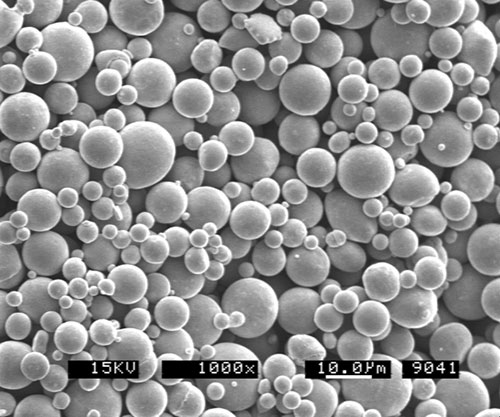MIM Process Options
MIM Powder Options
The powders used for MIM are generally small, round if not spherical, and deagglomerated. Already the technology has worked with over 1000 different alloys, but a few are dominant –17-4 PH stainless steel (AISI 630), 316L stainless steel, and several other stainless, steel, cobalt-chromium, copper, and titanium compositions. In most cases the median particle size is about 10 to 20 µm, but smaller powders are available if needed to form microscopic features.
Shown below is a high magnification scanning electron micrograph of a typical stainless steel powder used in MIM; note the marker showing 10 µm, indicating most of the particles are smaller than this size.

Alloys are most typical and three options exist in MIM. One is to mix the chemical ingredients as powders, say iron-nickel-chromium to form a bulk composition, relying in atomic diffusion during sintering to homogenize the ingredients, termed mixed elemental powder. A different route is to form molten alloy and to atomize the alloy into individual particles, where each particle is of the same alloy composition, termed pre-alloyed powder. A hybrid relies on a mixture of high alloy powder mixed with elemental powders, for example iron mixed with atomized nickel-chromium-iron particles, termed master alloy. Although more costly, the pre-alloy route is most typical in MIM.
